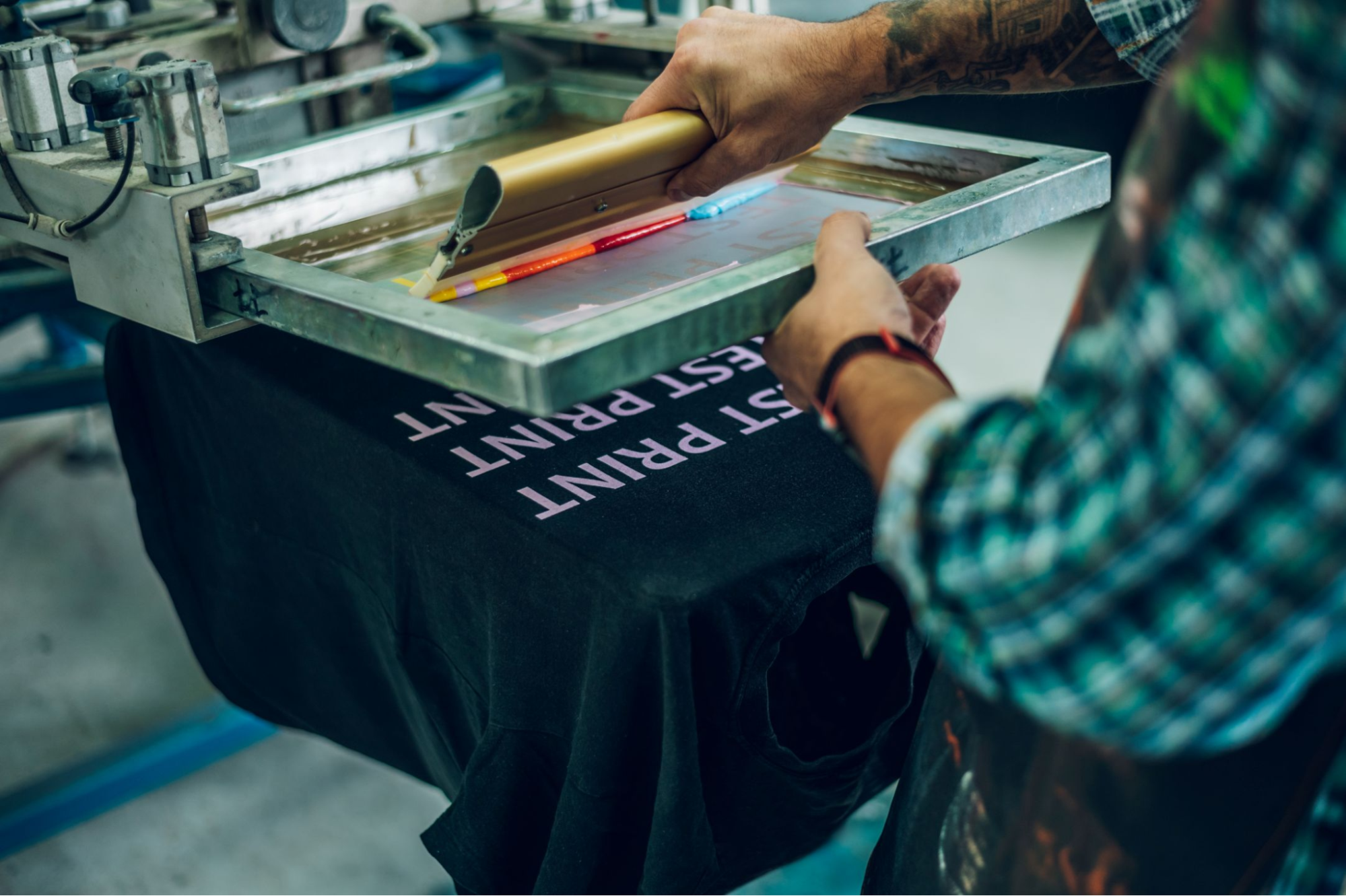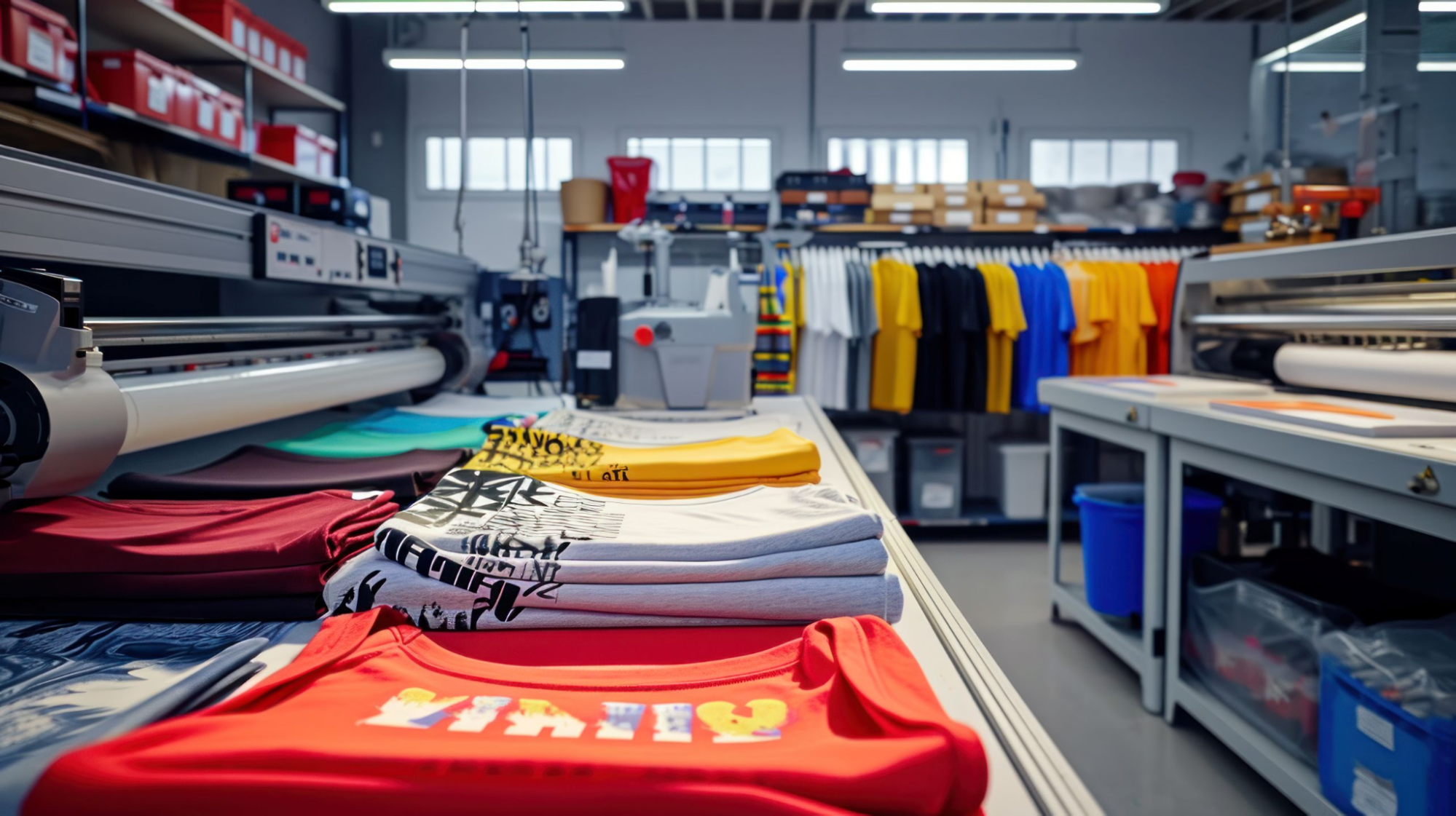
Starting a clothing line can be exciting, mainly when focusing on custom shirts. Screen printing remains one of the most popular and cost-effective methods for producing high-quality, durable prints on apparel.
This guide covers the essential steps to launch your t-shirt brand using screen printing techniques.
Understanding Screen Printing
Screen printing, or silk screening, is a technique where ink is pressed through a mesh stencil onto fabric. It allows for vibrant, long-lasting designs and is ideal for bulk production. Unlike digital printing, screen printing excels in creating bold, opaque colors on dark fabrics.
However, if you’re seeking professional results, outsourcing to experts would be an excellent start. Screen printing t-shirts offered by reputable providers can ensure high-quality output without the need for expensive equipment upfront.
Essential Equipment for Screen Printing
Before diving into production, you must gather essential screen-printing tools. Quality equipment ensures crisp prints, reduces errors, and improves efficiency, laying the foundation for a successful t-shirt line. Below is the list of essential equipment for screen printing:
- Screens: Mesh screens are used to stretch over frames, typically made of aluminum or wood.
- Emulsion & Sensitizer: Light-sensitive chemicals are used to create stencils.
- Squeegees: These are tools for pressing ink through the standard screen onto the fabric.
- Inks: These include specialty plastisol or water-based inks formulated for fabric.
- Exposure Unit: This involves a light source for transferring designs onto screens.
- Drying Rack or Conveyor Dryer: This ensures ink cures properly for durability.
Investing in quality equipment can help minimize errors and improve efficiency.
Designing for T-Shirt Screen Printing
Not all designs work well with screen printing. As a beginner, you should prioritize bold, high-contrast artwork with limited colors for easier printing. Avoid intricate details, gradients, or overly small text, as they may not transfer cleanly. Simple, well-spaced designs with solid colors yield the best results. Here are some things you need to consider:
- Simplicity: Detailed designs with gradients or fine lines may require advanced techniques like halftones.
- Color Separation: Each color in the design needs a separate screen, increasing complexity and cost.
- Placement: Standard prints are centered, but alternative placements (pocket prints, sleeve designs) can enhance uniqueness.
Using vector-based software can help ensure clean, scalable artwork in your custom apparel.
The Screen-Printing Process Step-by-Step
Screen printing is a meticulous yet rewarding process that transforms designs into wearable art. For beginners, understanding this workflow is key to producing professional-quality t-shirts efficiently. Here’s a breakdown of the essential stages in screen printing:

- Create the Artwork: Finalize the design and separate lots of colors if necessary.
- Prepare the Screen: Coat the screen with emulsion, let it dry in a dark room, then expose it to UV light with the design.
- Wash Out the Stencil: Rinse the screen to reveal the design areas where ink will pass through.
- Set Up the Press: Secure the screen onto the press and align it with the t-shirt.
- Print the Design: Apply ink, then use the squeegee to press it through the screen.
- Cure the Ink: Heat-set the print to ensure longevity, either with a heat press or conveyor dryer.
Following the screen-printing process step-by-step is crucial for achieving durable, vibrant prints and building a strong foundation for a successful t-shirt business.
Choosing the Right T-Shirts
The blank t-shirts’ quality, fabric, weight, fit, and color can significantly affect the final printed or decorated product. Choosing the right material ensures durability, comfort, and vibrant designs. Consider shrinkage, stitching, and brand alignment for a professional, long-lasting result. Here are some key considerations to remember:
- Fabric Composition: 100% cotton offers excellent ink adhesion, while blends may require special inks.
- Weight & Fit: Mid-weight (4.5–6 oz) shirts balance comfort and durability.
- Color: Light shirts work best with standard inks; dark shirts need an under base for vibrancy.
Selecting the right blank t-shirts is crucial—fabric quality, fit, and color can directly impact print durability, customer satisfaction, and brand reputation of your clothing line business.
Pricing and Profitability
Setting the right price requires analyzing production costs, competitor pricing, and target audience expectations. Factor in materials, labor, overhead, and desired profit margin. Balance affordability with perceived value to ensure profitability while staying competitive. The following are some factors to keep in mind in terms of pricing and profitability:

- Material Costs: These include blanks, ink, screens, and labor.
- Production Volume: Bulk orders can reduce per-unit costs.
- Competitor Analysis: Research similar brands to set competitive yet profitable prices.
Custom screen printing becomes more cost-effective with larger orders, making it ideal for businesses scaling production.
Marketing Your T-Shirt Line
A strong brand identity builds recognition, trust, and loyalty, differentiating you from competitors. An effective marketing strategy ensures targeted outreach, maximizes engagement, and drives conversions. Together, they can create a cohesive, memorable presence that fuels long-term business growth and customer retention.
Moreover, develop a unique selling proposition that resonates with the target audience and utilize social media, e-commerce platforms, and SEO to reach customers. Lastly, collaborate with local stores or events to increase visibility of your entire catalog.
Common Mistakes to Avoid
Beginners often face pitfalls like unclear goals, poor planning, inconsistent branding, inadequate market research, overspending on ineffective strategies, neglecting analytics, and failing to adapt. Avoiding these mistakes requires research, strategy, and flexibility to build a strong foundation for success.
For example, inadequate emulsion coating can lead to blurry prints. Using the wrong ink type or not curing properly can also result in cracking or fading. Lastly, starting with multicolor designs before mastering basics increases errors.
Conclusion
Screen printing t-shirts offers a scalable and profitable entry point into the apparel industry. By keeping the information mentioned above in mind, you can build a successful clothing line. A custom t-shirt printing business can evolve with dedication and creativity from a side hustle to a thriving enterprise.















